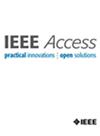Few-Shot Transfer Learning-Based Fault Classification in Wireless Sensor Networks
IF 3.4
3区 计算机科学
Q2 COMPUTER SCIENCE, INFORMATION SYSTEMS
引用次数: 0
Abstract
This paper introduces a few-shot transfer learning approach to fault classification in wireless sensor networks (WSNs) with a minimal number of fault samples. WSNs are susceptible to various faults, such as drift, stuck, bias, and spike faults, erratic behavior, and data loss, which can compromise system reliability. Conventional deep learning fault diagnosis methods have achieved promising results, however, the majority of these approaches require a substantial amount of labeled training data, which is not available in real-world scenarios. To address this, we propose a novel method that combines convolutional neural networks (ResNet-18, VGG-16, and MobileNetV2 backbone architectures) with prototypical networks for fault diagnosis in WSNs with only a few fault samples. By transforming time-series data into Gramian Angular Field images, our approach leverages pre-trained deep learning models to extract feature-rich embeddings. These embeddings are then classified using a prototypical network, which enhances the system’s ability to diagnose faults even with a limited amount of labeled data. The proposed model is lightweight and deployable on Internet of Things (IoT) devices, ensuring efficient fault classification with minimal computational resources. Experimental results demonstrate the model’s high accuracy and robustness across various fault types, highlighting its potential for scalable and adaptive IoT applications.求助全文
约1分钟内获得全文
求助全文
来源期刊

IEEE Access
COMPUTER SCIENCE, INFORMATION SYSTEMSENGIN-ENGINEERING, ELECTRICAL & ELECTRONIC
CiteScore
9.80
自引率
7.70%
发文量
6673
审稿时长
6 weeks
期刊介绍:
IEEE Access® is a multidisciplinary, open access (OA), applications-oriented, all-electronic archival journal that continuously presents the results of original research or development across all of IEEE''s fields of interest.
IEEE Access will publish articles that are of high interest to readers, original, technically correct, and clearly presented. Supported by author publication charges (APC), its hallmarks are a rapid peer review and publication process with open access to all readers. Unlike IEEE''s traditional Transactions or Journals, reviews are "binary", in that reviewers will either Accept or Reject an article in the form it is submitted in order to achieve rapid turnaround. Especially encouraged are submissions on:
Multidisciplinary topics, or applications-oriented articles and negative results that do not fit within the scope of IEEE''s traditional journals.
Practical articles discussing new experiments or measurement techniques, interesting solutions to engineering.
Development of new or improved fabrication or manufacturing techniques.
Reviews or survey articles of new or evolving fields oriented to assist others in understanding the new area.
 求助内容:
求助内容: 应助结果提醒方式:
应助结果提醒方式:


